Cats are popular pets around the world, known for their independence and unique personality. However, just like humans, cats are also prone to a variety of diseases and health problems. This is why disease prevention in cats is so important.
Understanding the natural behavior of cats is essential to ensuring their health and well-being. Cats are territorial animals by nature and have an innate need to explore and hunt. It is important to provide them with an environment that allows them to satisfy these natural instincts.
Several factors can influence feline behavior and, consequently, their health. Changes in the environment, lack of stimulation and inappropriate interaction can lead to stress and unwanted behaviors. It is essential to observe your cat’s behavior and identify any signs that something may be wrong.
A cat with healthy behavior usually shows some characteristic signs. They are curious, playful and have a good relationship with other animals and people. Furthermore, they have a normal appetite, maintain their personal hygiene and sleep well.
However, some behavioral problems are common in cats and may indicate the presence of an underlying health problem. These include aggression, destruction of objects, urinating outside the litter box, and excessive vocalization. If your cat exhibits any of these behaviors, it is important to seek veterinary care to rule out medical problems.
Proper management of feline behavior can help prevent diseases in cats. Providing an enriched environment, with toys, scratching posts and places to hide, can help reduce stress and promote healthy behaviors. Furthermore, regular interaction with your cat, such as playing and petting, is essential to strengthening the bond and ensuring its well-being.
There are several disease prevention strategies in cats that can be implemented. Maintaining a balanced diet suited to your cat’s needs, ensuring regular vaccinations, maintaining adequate hygiene and carrying out periodic veterinary examinations are important measures to prevent diseases.
In summary, preventing diseases in cats is essential to ensure their health and well-being. Understanding their natural behavior, observing signs of healthy behavior, and taking steps to prevent behavior problems are essential. Additionally, providing an enriched environment and adopting disease prevention strategies are also important. By properly caring for your cat, you can help him live a long, healthy life.
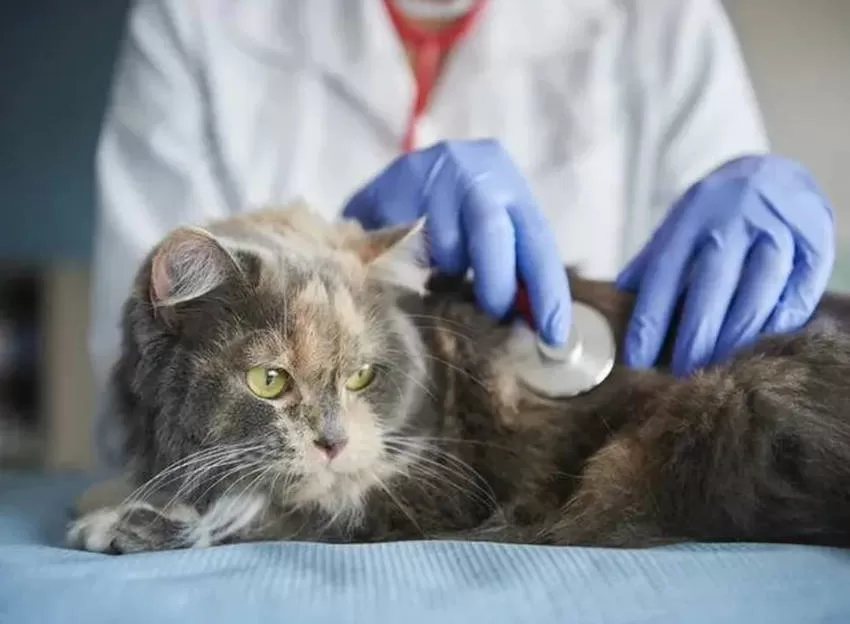
Understanding Cats’ Natural Behavior
Cats are fascinating animals, with unique behaviors and natural instincts. To ensure the health and well-being of our feline friends, it is essential to understand their natural behavior.
Cats are solitary animals by nature. Although they are socialized with other cats and even humans, they still have a need for their own space and time to themselves. It is common for cats to spend long periods sleeping or resting in quiet areas of the house.
Furthermore, cats are born hunters. Their hunting instinct is very strong and, even though they live indoors, they still have the need to chase and hunt. This can manifest itself in playing with toys, chasing shadows or even chasing small insects that enter the house.
Cats are also territorial animals. They need to mark their territory, whether by rubbing their faces against objects or marking them with urine. It’s important to provide cats with designated areas for these behaviors, such as scratching posts and litter boxes, so they can satisfy these natural needs.
Furthermore, cats are nocturnal animals. They have keen eyesight, adapted for hunting in low-light conditions. Therefore, it is common for cats to be more active at night, which can cause some sleep disturbances for their owners. It is important to understand and accept this natural behavior of cats.
Understanding the natural behavior of cats is essential to ensuring a suitable environment for them. Providing areas for resting, playing and marking territory, as well as accepting their nocturnal behavior, are fundamental aspects of ensuring the health and well-being of felines.

Factors that influence feline behavior
Cats are fascinating animals, with unique and complex behaviors. To better understand feline behavior, it is important to take into account the factors that can influence it.
1. Genetics: Just like humans, cats have genetic characteristics that can affect their behavior. Some breeds are known for being more sociable and affectionate, while others can be more independent and reserved. Furthermore, genetics can also influence the predisposition of certain behaviors, such as the tendency to display anxiety or aggression.
2. Life experiences: Cats’ lived experiences also play an important role in their behavior. Cats that have been exposed to positive situations since they were puppies, such as adequate socialization and adequate training, tend to be more sociable and confident. On the other hand, cats that have been exposed to negative experiences, such as abuse or neglect, may develop behavioral problems such as fearfulness and aggression.
3. Environment: The environment in which the cat lives can also influence its behavior. An enriched environment, with access to toys, scratching posts and places to hide, can help reduce stress and promote healthy behavior. On the other hand, a monotonous and boring environment can lead to boredom and the development of unwanted behaviors, such as destroying furniture and excessive vocalization.
4. Interaction and socialization: Adequate interaction with humans and other animals from an early age can have a significant impact on a cat’s behavior. Cats that have received adequate socialization since kittens tend to be more friendly, playful and adaptable. On the other hand, cats that have been deprived of social interaction may develop fear and anxiety around people and other animals.
In conclusion, feline behavior is influenced by a variety of factors, including genetics, life experiences, environment, and social interaction. Understanding these factors can help cat owners identify and address behavioral problems, as well as promote a healthy and enriching environment for their pet felines.
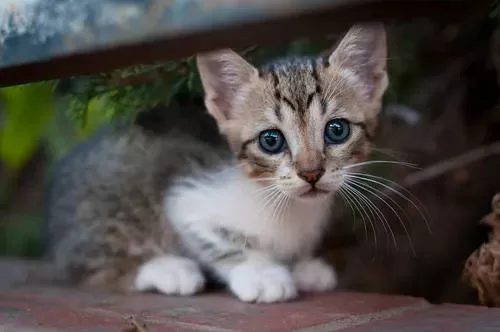
Signs of Healthy Feline Behavior
Cats are fascinating animals with their unique and intriguing behaviors. It’s important to understand the signs of healthy feline behavior to ensure your feline’s well-being and happiness. Here are some signs of a healthy, happy cat:
1. Proper nutrition: A healthy cat will have a normal appetite and will eat regularly. They must have a stable weight and a good appetite. Sudden changes in appetite could be a sign of a health problem.
2. Personal hygiene: Cats are known for being extremely hygienic. They spend a lot of their time grooming themselves and grooming themselves. A healthy cat will have shiny, clean fur with no signs of dirt or fleas.
3. Social behavior: Cats are social animals, even if they sometimes seem independent. A healthy cat will be interested in interacting with family members and will demonstrate affectionate behaviors such as purring and rubbing against people’s legs. They should also be comfortable with the presence of other animals, if any, in the home.
4. Physical activity: Cats are naturally active animals. A healthy cat will have regular periods of physical activity, including play and simulated hunting. They must have the energy to exercise and explore the environment around them.
5. Adequate Sleep: Cats are known for getting plenty of sleep, but they should also have adequate wakefulness periods. If your cat spends most of its time sleeping and appears lethargic, it could be a sign of illness or pain.
6. Proper use of the litter box: A healthy cat will use the litter box regularly to eliminate. Persistent elimination problems outside of the litter box could be a sign of health problems or stress.
7. Bright coat and eyes: A healthy cat will have a shiny coat and clear, bright eyes. Watery, red, or cloudy eyes can be signs of health problems.
Observing and understanding these signs of healthy feline behavior will help you identify early health problems and take preventative measures. It’s important to notice subtle changes in your cat’s behavior and seek veterinary advice if something seems out of the ordinary.
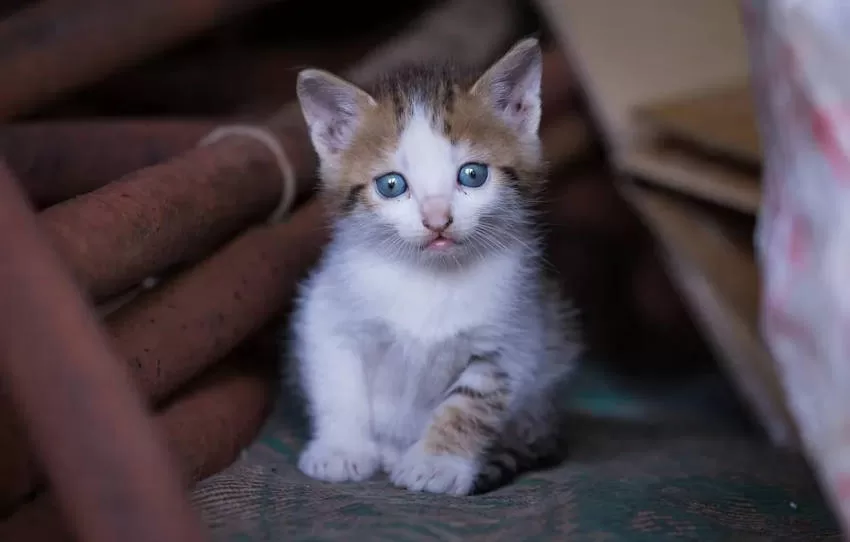
Common Behavior Problems in Cats
Cats are animals with unique and complex behavior. However, just like humans, they can also face behavioral problems. These problems can be caused by a variety of factors and can affect both the cat’s quality of life and the relationship with their owners.
One of the most common behavioral problems in cats is inappropriate elimination. This occurs when the cat urinates or defecates outside the designated litter box. It can be caused by stress, health problems, changes in the environment, or even a lack of proper litter box cleaning.
Another common behavioral problem is aggression. Cats can become aggressive towards other pets, people or even themselves. Aggression can be caused by fear, stress, territoriality or lack of adequate socialization.
In addition, cats can also exhibit destructive behaviors, such as scratching furniture, curtains or carpets. This is usually because they need to sharpen their claws and mark their territory. However, this behavior can be redirected through the use of appropriate scratching posts and environmental enrichment.
Another common behavioral problem in cats is separation anxiety. This occurs when the cat becomes extremely distressed when its owner is away. Symptoms include excessive meowing, destruction of objects, and inappropriate use of the litter box. Separation anxiety can be treated through desensitization and counterconditioning techniques.
Finally, binge eating is another behavioral problem that can affect cats. This occurs when the cat eats too much and too quickly, which can lead to health problems such as obesity and vomiting. Proper feeding management, such as using interactive feeders, can help prevent binge eating.
In conclusion, behavioral problems are common in cats and can affect both their well-being and their relationship with their owners. It is important to pay attention to signs of abnormal behavior and seek help from a veterinarian or animal behaviorist if necessary. With proper management and prevention strategies, it is possible to improve cats’ quality of life and avoid behavior-related health problems.
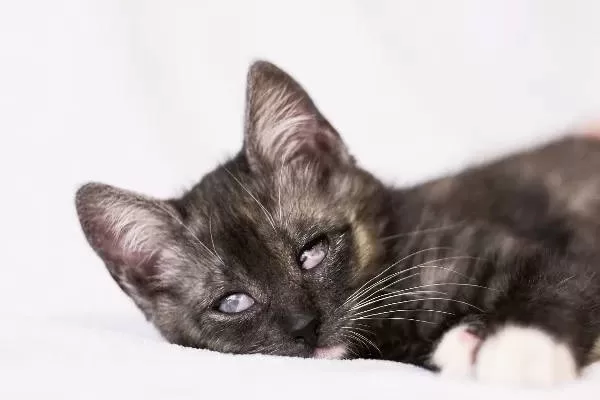
Disease Prevention in Cats
Cats are adorable and popular pets around the world. However, just like humans, cats are subject to various diseases that can affect their health and well-being. Disease prevention is essential to ensuring your cat lives a long, healthy life. Here are some important strategies for preventing illness in cats:
1. Adequate vaccination
Vaccination is one of the most effective ways to prevent disease in cats. Vaccines help strengthen your cat’s immune system and protect it from serious diseases such as rabies, feline panleukopenia and calicivirosis. Be sure to follow your veterinarian’s recommended vaccination schedule and keep your cat’s vaccinations up to date.
2. Parasite control
Parasites, such as fleas, ticks and worms, can cause a range of health problems in cats. It’s important to implement a regular parasite control program to prevent infestations and keep your cat protected. Consult your veterinarian for guidance on the best parasite control products for your cat and follow directions for use correctly.
3. Balanced diet and exercise
A balanced diet and adequate exercise are essential to maintaining your cat’s health and adequate weight. Feed your cat a quality cat food that meets its specific nutritional needs. Avoid feeding your cat human foods, as they can be harmful to your feline’s health. Additionally, encourage your cat’s regular physical activity by providing interactive toys and space for him to exercise.
4. Hygiene and dental care
Proper hygiene and dental care are key to preventing illnesses in cats. Brush your cat’s coat regularly to remove loose hair and prevent hairballs from forming. Additionally, brush your cat’s teeth regularly to prevent plaque buildup and periodontal disease. If necessary, consult your veterinarian for professional dental cleanings.
5. Regular vet visits
Regular visits to the veterinarian are essential to monitor your cat’s health and detect any problems early. Your veterinarian may perform routine exams, such as blood and urine tests, to assess your cat’s overall health. Additionally, your veterinarian will be able to provide specific guidance about your feline’s health needs.
In conclusion, disease prevention in cats is crucial to ensuring a long and healthy life for your pet. Adequate vaccinations, parasite control, a balanced diet, regular exercise, proper hygiene and dental care, as well as regular visits to the veterinarian, are important strategies for preventing diseases in cats. Take good care of your cat and he will live a happy and healthy life.

Disease prevention strategies in cats
Preventing diseases in cats is essential to ensuring the health and well-being of these pets. There are several strategies that can be adopted to help prevent disease and promote the health of cats. Here are some of the key disease prevention strategies in cats:
1. Vaccination
Regular vaccination is one of the most important strategies for preventing diseases in cats. Vaccines are available to protect cats against a variety of diseases, including feline viral rhinotracheitis, feline calicivirosis, feline panleukopenia, and rabies. It is important to follow your veterinarian’s recommended vaccination schedule to ensure your cat’s continued protection against infectious diseases.
2. Parasite control
Parasites, such as fleas, ticks and worms, can cause a range of illnesses in cats. It is important to implement parasite control measures, such as using preventive medications and maintaining a clean and hygienic environment. Cats should be examined regularly for the presence of parasites and treated according to your veterinarian’s recommendations.
3. Proper nutrition
Proper nutrition plays a key role in preventing diseases in cats. A balanced, high-quality diet provides essential nutrients to strengthen your cat’s immune system and prevent illnesses related to poor nutrition. It is important to offer a balanced diet adapted to the cat’s specific needs, taking into account its age, weight and health condition.
4. Physical exercise
Regular exercise is important for maintaining a healthy weight and preventing disease in cats. Lack of exercise can lead to excessive weight gain, which increases the risk of developing various diseases, such as diabetes and heart problems. Encouraging physical activity through play and access to safe outdoor areas can help keep cats active and healthy.
5. Regular vet visits
Regular visits to the veterinarian are essential for preventing diseases in cats. During appointments, the veterinarian can perform routine exams, check the cat’s health and identify any health problems early. In addition, the veterinarian can provide specific guidance and recommendations to maintain the cat’s health.
By adopting these cat disease prevention strategies, owners can help ensure that their felines enjoy a long, healthy, and happy life. It is always important to seek professional advice from your veterinarian to obtain the best personalized recommendations for the cat in question.
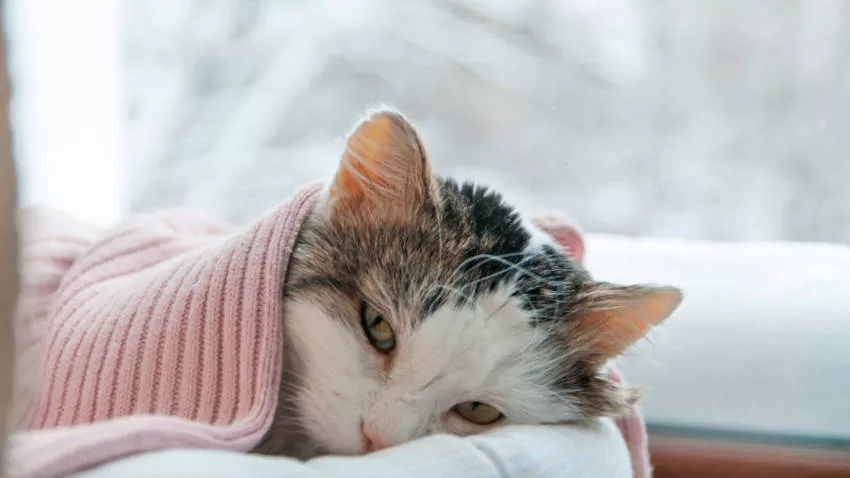
Importance of interaction and environmental enrichment
Interaction and environmental enrichment are fundamental for preventing diseases in cats. These activities help keep cats mentally stimulated, physically and emotionally healthy, reducing the risk of health problems.
When cats do not receive adequate stimulation, they can develop unwanted behaviors, such as aggression, anxiety and depression. These behavioral problems are often associated with physical illnesses, such as obesity and urinary problems.
One of the most effective ways to promote interaction and environmental enrichment is to provide cats with toys and activities that stimulate their natural instincts, such as hunting and exploration. Toys with feathers, balls and scratching posts are great options for keeping cats active and entertained.
Additionally, it’s important to give cats access to different areas of the house, such as shelves and climbing trees, so they can explore different heights and have their own space to relax.
Interaction with owners is also essential for the health of cats. Spending time playing, petting and talking to cats strengthens the bond between owner and animal, promoting well-being and preventing behavioral problems.
Another important strategy is to offer cats an adequate and balanced diet, according to their nutritional needs. A healthy diet contributes to maintaining an ideal weight and prevents diseases related to poor nutrition.
Cleaning the environment is also essential to prevent diseases in cats. The litter box must be cleaned regularly, ensuring hygiene and avoiding urinary problems. Furthermore, it is important to keep the environment free of toxic substances and offer a quiet and safe place for cats to rest.
In summary, environmental interaction and enrichment play a key role in preventing disease in cats. Providing adequate stimuli, offering a balanced diet, keeping the environment clean and promoting interaction with owners are effective strategies to guarantee the health and well-being of felines.
External Links:

